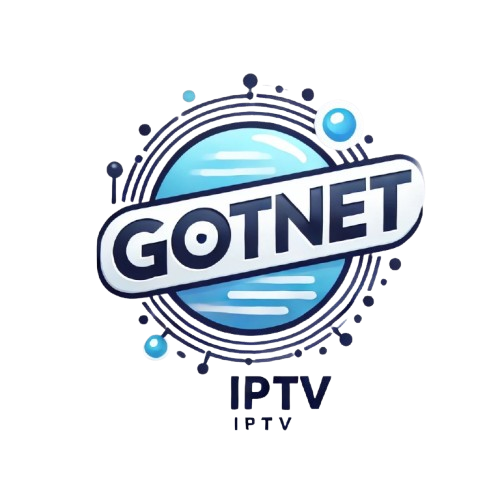GotNET
Ensuring Device Compatibility for Optimal IPTV Streaming
In the digital age, Internet Protocol Television (IPTV) has emerged as a revolutionary way to consume content, offering viewers the flexibility to stream their favorite shows and movies over the internet. As IPTV services grow in popularity, ensuring device compatibility becomes paramount for a seamless viewing experience. Different devices, such as smart TVs, set-top boxes, smartphones, and tablets, each have unique specifications and requirements that need to be considered. This article delves into the critical aspects of ensuring device compatibility for optimal IPTV streaming, focusing on understanding IPTV requirements, key factors for seamless performance, and methods for testing and troubleshooting common compatibility issues.
Understanding IPTV Requirements for Various Devices
IPTV operates on the premise of delivering television content using internet protocols, which necessitates specific technical requirements from the devices being used. Each device must be equipped with sufficient processing power, memory, and a stable internet connection to handle the streaming demands of IPTV. For example, smart TVs typically come with built-in applications for IPTV services, but it is essential to verify that the TV’s operating system supports the app and can handle high-definition (HD) content. Similarly, older models may lack the necessary specifications, making them incompatible with modern IPTV solutions.
Additionally, the choice of operating system plays a crucial role in compatibility. Devices running on Android, iOS, Linux, or proprietary systems may offer different levels of support for IPTV applications. For instance, Android devices generally have wider access to IPTV apps since numerous applications are developed specifically for this platform. Therefore, users should ensure their devices are up-to-date with the latest software versions that include essential security and performance updates. Understanding these requirements can help users choose the right device for their IPTV experience.
Furthermore, network connectivity is an integral factor in the performance of IPTV streaming. Devices need to be connected to a reliable and high-speed internet connection, whether through wired Ethernet or Wi-Fi. Bandwidth limitations can significantly affect the quality of streaming, leading to buffering and interruptions. Users should conduct speed tests on their network to confirm that it meets the recommended download speeds for their chosen IPTV service. This understanding of device requirements can help users make informed decisions to enhance their streaming experience.
Key Factors for Ensuring Seamless Streaming Performance
To achieve optimal IPTV streaming, several key factors must be considered to ensure seamless performance. First and foremost is the selection of a reputable IPTV service provider. Users should research and choose providers known for their reliable streaming capabilities, diverse content offerings, and strong customer support. Compatibility with various devices should also be confirmed; reputable providers often list the devices supported on their platforms, allowing users to make informed purchasing decisions.
Another critical factor is ensuring that the devices are equipped with the latest firmware or software updates. Manufacturers frequently release updates that enhance device performance, security, and compatibility with new applications. Ignoring these updates can lead to a decline in streaming quality, with common issues such as lagging, freezing, or even crashes during viewing. Users should regularly check for updates to keep their devices performing at their best.
Lastly, optimizing the local network environment can dramatically improve IPTV performance. This includes positioning the router in a central location to minimize interference and maximize signal strength. Using dual-band routers can also help by allowing devices to connect to less congested frequencies. Additionally, users should limit the number of devices connected to the network while streaming to ensure that available bandwidth is dedicated to the IPTV service. These proactive measures can help maintain a smooth streaming experience.
Testing and Troubleshooting Common Compatibility Issues
Despite careful planning and preparation, users may still encounter compatibility issues while using IPTV services. One common issue is the failure of the IPTV application to load or respond. In such cases, users should first check if the device meets the minimum requirements for the app. A quick uninstall and reinstall of the application can often resolve temporary glitches. Regularly clearing the app’s cache can also improve performance and reduce loading times.
Network-related issues are another frequent cause of streaming problems. Users should run diagnostics to check their internet connection, ensuring that it is stable and fast enough for IPTV services. If buffering persists, it may be beneficial to switch to a wired connection or to restart the router. Additionally, examining the quality of the local network setup, such as checking for bandwidth-heavy applications running simultaneously, is essential for pinpointing issues that could affect streaming quality.
Lastly, users should consider seeking support from their IPTV service provider if compatibility issues persist. Many providers offer online resources, including FAQs and troubleshooting guides, which may address common problems. Engaging with customer support can also yield insights specific to the user’s device or setup, potentially uncovering solutions that are not readily available in self-help resources. By employing these testing and troubleshooting strategies, users can better navigate the complexities of IPTV compatibility, ensuring a more enjoyable viewing experience.
In conclusion, ensuring device compatibility for optimal IPTV streaming is a multifaceted endeavor that involves understanding the technical requirements, considering key performance factors, and effectively troubleshooting potential issues. By carefully selecting the right devices and IPTV service providers while also maintaining a robust network setup, users can significantly enhance their streaming experience. As technology continues to evolve, staying informed about advancements in IPTV services and device capabilities will empower viewers to make the most of their entertainment choices. Ultimately, a seamless IPTV experience not only enriches viewing pleasure but also reflects the broader potential of digital media in the modern world.
